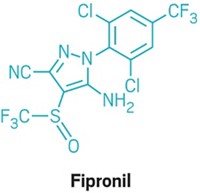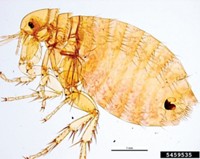Advertisement
Grab your lab coat. Let's get started
Welcome!
Welcome!
Create an account below to get 6 C&EN articles per month, receive newsletters and more - all free.
It seems this is your first time logging in online. Please enter the following information to continue.
As an ACS member you automatically get access to this site. All we need is few more details to create your reading experience.
Not you? Sign in with a different account.
Not you? Sign in with a different account.
ERROR 1
ERROR 1
ERROR 2
ERROR 2
ERROR 2
ERROR 2
ERROR 2
Password and Confirm password must match.
If you have an ACS member number, please enter it here so we can link this account to your membership. (optional)
ERROR 2
ACS values your privacy. By submitting your information, you are gaining access to C&EN and subscribing to our weekly newsletter. We use the information you provide to make your reading experience better, and we will never sell your data to third party members.
Business
Group Blames Pesticide For Microcephaly
Pesticides: Experts debunk connection between pyriproxyfen and epidemic among newborns
by Marc S. Reisch
February 17, 2016
| A version of this story appeared in
Volume 94, Issue 8

An Argentinian physicians group claims that a larvicide, not Zika virus, is responsible for an outbreak of infants born with small heads in Brazil. While some local governments in Brazil have stopped using the larvicide, pyriproxyfen, government authorities and scientific experts contend that it is safe.
Pyriproxyfen is used to treat drinking water, where it kills off the larvae of mosquitoes, including those responsible for transmitting Zika virus. Over the past year, Brazilian authorities have counted more than 4,000 cases of microcephaly, as the affliction in newborns is known, in areas where Zika virus is now widespread.
A report from Physicians in the Crop-Sprayed Villages insists that marketing efforts by the chemical’s maker, Sumitomo Chemical, and government indifference to the mostly poor population affected by microcephaly are responsible for the tragedy.
But Brazil’s Ministry of Health says that “no epidemiological studies show the association between use of pyriproxyfen and microcephaly.” On the other hand, tests of blood, tissue, and amniotic fluid from affected infants suggest a relationship between Zika and microcephaly, according to the ministry. Some localities that do not use pyriproxyfen also have reported microcephaly cases, the ministry adds.
Sumitomo asserts that the chemical, which it discovered in 1984, is safe and that “concerns related to microcephaly are totally unfounded.” The product is approved in 40 countries and recommended by the World Health Organization as safe for use in drinking water, Sumitomo says.
Pyriproxyfen works by interfering with mosquitoes’ growth hormones “from hatching, to larvae, to pupae,” explains Ian Musgrave, a pharmacology lecturer at the University of Adelaide. The hormonal pathway of the growth regulator, so effective against mosquitoes, “does not exist in organisms with backbones, such as humans,” he says. “Pyriproxyfen has very low toxicity in mammals as a result.”
Some scientists wonder whether an unknown agent is responsible for the microcephaly. “Perhaps they are getting a new chemical that forms on reaction of pyriproxyfen with whatever reagent they use for water purification,” suggests Susan Kegley, CEO of the consulting firm Pesticide Research Institute. “There is certainly more than one possibility.”






Join the conversation
Contact the reporter
Submit a Letter to the Editor for publication
Engage with us on Twitter